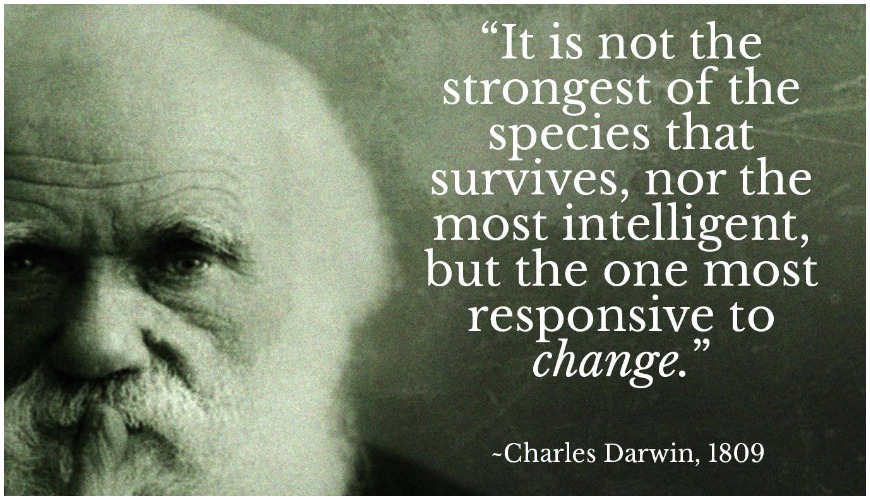I recently attended a Product Lifecycle Management (PLM) conference on PLM and the Internet of Things (IoT), PI PLMx 2017, and met with the team from Zero Wait-State (ZWS). ZWS led a session on IoT that was insightful and filled with input from PLM leaders from over 20 companies. With our common interest in PLM and IoT, I was asked to write a guest blog about my takeaways from the conference.
A theme that struck me throughout the conference was the difference between attendees’ and presenters’ views on the relationship and linkage between PLM and IoT. Conceptually, the phrase that came to mind that best describes the disparity in views about PLM and IoT is “Corporate Darwinism”.
We know of Darwin’s theory that included cooperation as an optimal survival strategy for selection of the fittest. In the world of PLM and IoT, the survivors will be corporations that weave IoT into their PLM fabric. PLM is well known and recognized for enabling product development; yet during a vendor roundtable session with PLM application software providers, it was clear that IoT is outside of their scope of concern.
 Back to corporate Darwinism: organizations and business models need to evolve and align with new technical developments. In the area of PLM and IoT, the impact on business models becomes significant. IoT products will impact a firm on many dimensions: financial, customer experience, customer satisfaction, as well as brand image, and others. Unfortunately, there are few resources to help firms design business processes, design/select and implement IT capabilities, and establish governance models and staff skills to manage IoT-enabled products throughout their complete lifecycle (design, sell, service, and retire products).
Back to corporate Darwinism: organizations and business models need to evolve and align with new technical developments. In the area of PLM and IoT, the impact on business models becomes significant. IoT products will impact a firm on many dimensions: financial, customer experience, customer satisfaction, as well as brand image, and others. Unfortunately, there are few resources to help firms design business processes, design/select and implement IT capabilities, and establish governance models and staff skills to manage IoT-enabled products throughout their complete lifecycle (design, sell, service, and retire products).
While over 50% of companies report having an IoT strategy, there is little evidence the strategy is more than just a vision or hope that product development teams include IoT in products under development. Many organizations are missing a fundamental element for success: organizational governance (accountability and authority). Lacking strong governance for IoT, companies struggle to break-out of traditional silo-structures.
Progressive organizations are rethinking their business models and opportunities created by IoT-enabled products. I help clients develop an IoT strategy that begins with a focus on the impact of IoT-enablement on business models – looking at additional costs incurred and the revenue opportunities. Understanding the full cost of IoT products is much larger in scope than typical NPI and product development expenses.
For example, Brunswick Corporation reported adding IoT capabilities to virtually all of their product lines. As they add IoT capabilities, they are developing new processes and tools to improve the customer experience with IoT-enabled products at every touch point.
 A recent article in CIO helps identify ten areas to consider in developing an IoT strategy. A few points to amplify – 1) IoT strategy starts with understanding the impact to customer experiences, 2) Think big but start small – you need cycles of learning to ensure you’ve got capabilities in place before scaling 3) Use IoT to become a platform company – how can IoT create an ecosystem where you and others win.
A recent article in CIO helps identify ten areas to consider in developing an IoT strategy. A few points to amplify – 1) IoT strategy starts with understanding the impact to customer experiences, 2) Think big but start small – you need cycles of learning to ensure you’ve got capabilities in place before scaling 3) Use IoT to become a platform company – how can IoT create an ecosystem where you and others win.
The scope of IoT-enablement is much larger than traditional PLM tools/processes and in my opinion, there is little change in services from PLM vendors to address the increased needs…apart from PTC. We see PTC continuing to develop/acquire the suite of capabilities needed for operating an IoT-based business. But, the gap in governance and leadership remains an area that needs to be filled.
What is your experience with PLM and IoT? Does your company have a solid IoT strategy in-place, and if yes, what is the impact to your PLM strategy? Can you “operationalize” your strategy, meaning, can it be deployed and generate additional revenues?
 I’m delighted to be asked to be a guest blogger for Zero Wait-State. We share a passion for improving a company’s capabilities to excel in developing new products, business models, and success. For organizations to survive and thrive, incorporating PLM and IoT is essential; those who are slow to adapt risk becoming corporate fossils.
I’m delighted to be asked to be a guest blogger for Zero Wait-State. We share a passion for improving a company’s capabilities to excel in developing new products, business models, and success. For organizations to survive and thrive, incorporating PLM and IoT is essential; those who are slow to adapt risk becoming corporate fossils.
If you’d like an independent review of your IoT-strategy and readiness to scale, contact us – we’d be happy to review your processes, tools, and organizational structures to help ensure you’re ready for success. We look forward to your comments below.


